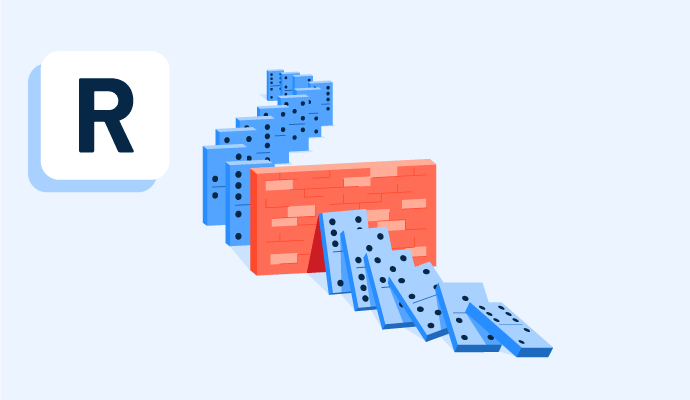What is risk management?
Risk management helps organizations understand and prevent unwanted events, potential threats, or other risks from happening. A solid risk management strategy provides businesses with instructions on how to mitigate risk before it evolves into a threat or permanent damage.
Anything that may negatively affect a business, its objectives, or its employees is considered a risk. Organizations may face issues such as:
- Legal liability or law change
- Natural or human-made disasters
- Negative public relations
- Unstable economies and global markets
- Project failure
- Data breaches
- Cybersecurity failures
Some companies use operational risk management software to automate the process of identifying, assessing, and addressing risks across every department. This software is especially prevalent for larger enterprise companies or high-risk industries like healthcare, government, and finance.
Types of risk management
Different types of risk management are employed to avoid or deal with risks. Each one has its own set of processes that protect the business and its objectives.
- Avoidance: Risk avoidance attempts to completely evade any identified risky activities.
- Retention: Risk retention happens when a business accepts certain risks as inevitable. With risk retention, mitigating risk isn’t as important as creating a contingency plan to reduce risk when it happens.
- Sharing and spreading: Risk sharing involves dividing risk with another organization within a business. This may involve the assistance of a third-party.
- Transferring: This is similar to risk sharing, but with the required involvement of an external agency. The third-party could be an insurance company or law firm.
- Prevention and reduction: Risk reduction helps businesses take action to lessen the probability of a risk occurring at all.
Steps involved in risk management
Creating a risk management strategy and process helps businesses get ahead of risk and either prevent it from happening or reduce the likelihood of it happening. Following these steps creates a strong risk management strategy for any business:
- Identify the risk. Take note of any potential risk within each department. These risks should be recorded in some way for teams to reference.
- Analyze the risk. What’s the probability of this risk occurring? If it does occur, what are the factors and potential consequences to the business?
- Assess and evaluate the risk. If a risk does occur, what is its magnitude? What level of risk is acceptable for the business? Use risk analysis and internal auditing to answer these questions. This will help inform strategy for the remaining steps.
- Mitigate the risk. Depending on the level of risk and its importance, create a response strategy for if and when the risk occurs.
- Monitor the risk. Businesses only know the effectiveness of their risk management strategies when they’re used and monitored. Ensure that the mitigation plans put in place are working. If they’re not, adjust them as needed, especially if the risk in question has become a bigger threat or priority.
Benefits of risk management
Being able to identify and prevent risks before they have a chance to impact the company in any way is an obvious benefit to risk management. A detailed risk management strategy can only mean good things for the business. Other advantages concern:
- Increased overall awareness of risk
- Confidence in objectives and goals because risks have been assessed
- Higher employee morale and feeling of safety
- Fewer surprises
- Easier escalation process with pre-built risk management
- Dual use as a training tool for employees, both new and existing
- Reduced spending repairing risk
- Protection of brand identity and reputation
- Better awareness of global economic and market trends
- More stable market share
- Reduced likelihood of lawsuits and non-compliance
Risk management vs. risk assessment vs. risk analysis
Risk management is the system and strategy involved in identifying and intercepting any potential risk to a company.
Risk assessment appertains to a function within risk management that businesses draw on to evaluate potential risks and threats while estimating the overall impact of the risk. Risk assessments break potential risks into categories.
Risk analysis concerns analyzing a single risk and how likely it is to occur. This risk analysis identifies any potential issues that may come with that single risk.
Looking for IT-specific risk management? Look no further than these IT risk management platforms.

Whitney Rudeseal Peet
Whitney Rudeseal Peet is a former freelance writer for G2 and a story- and customer-centered writer, marketer, and strategist. She fully leans into the gig-based world, also working as a voice over artist and book editor. Before going freelance full-time, Whitney worked in content and email marketing for Calendly, Salesforce, and Litmus, among others. When she's not at her desk, you can find her reading a good book, listening to Elton John and Linkin Park, enjoying some craft beer, or planning her next trip to London.




















